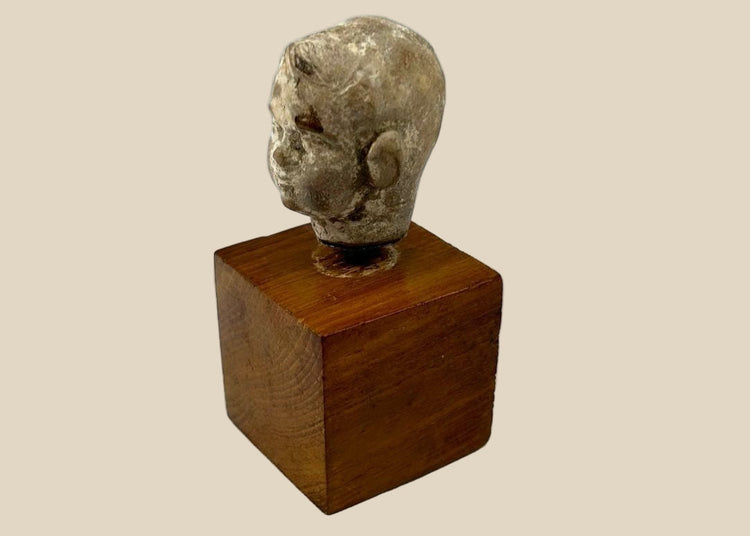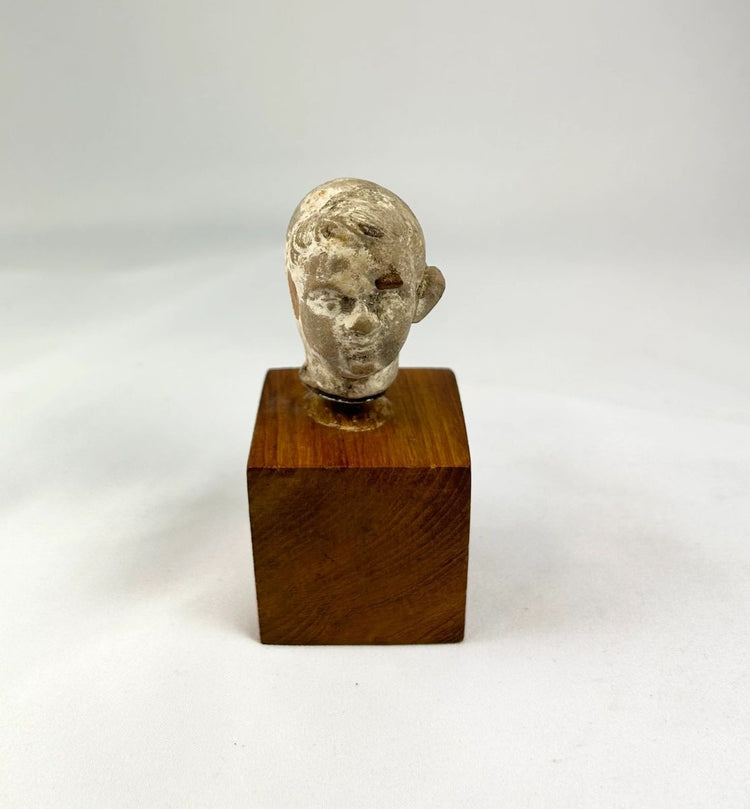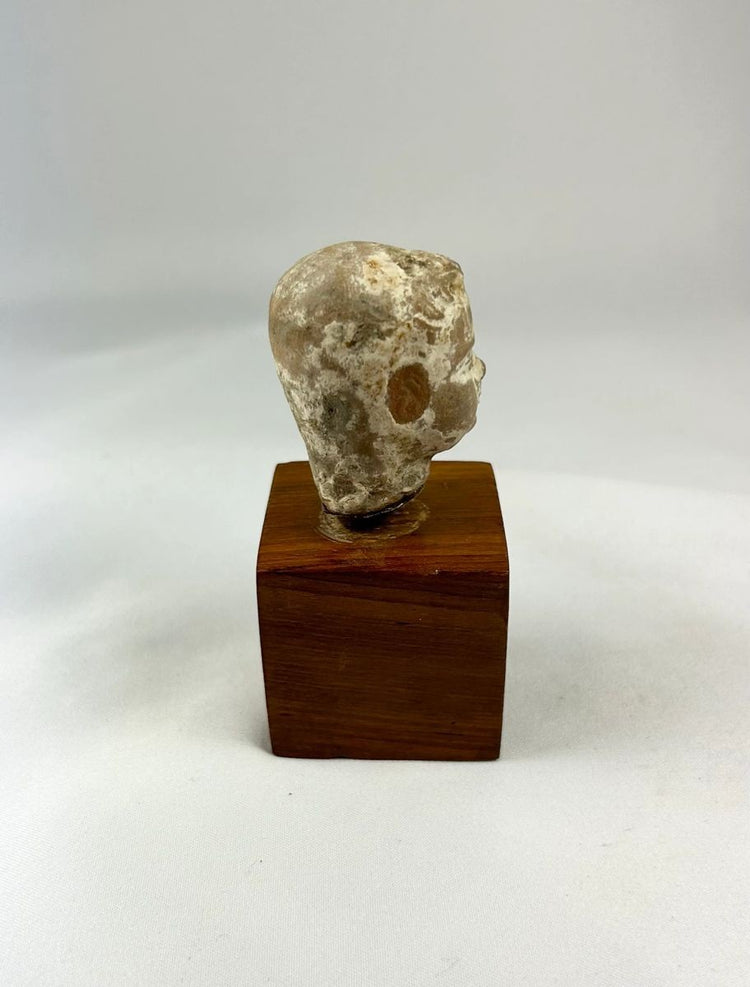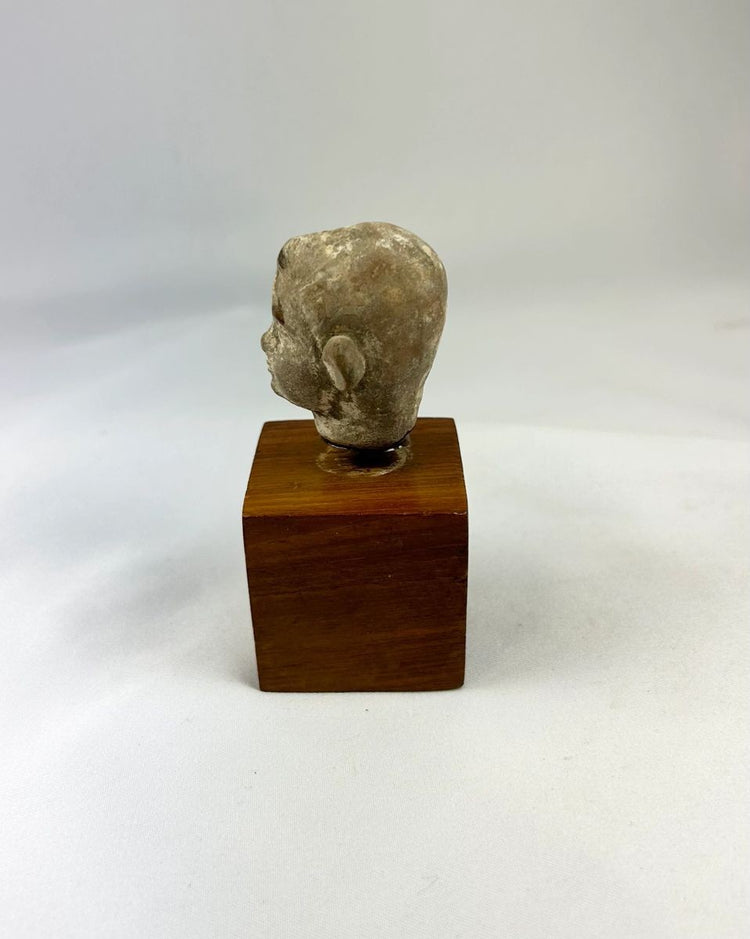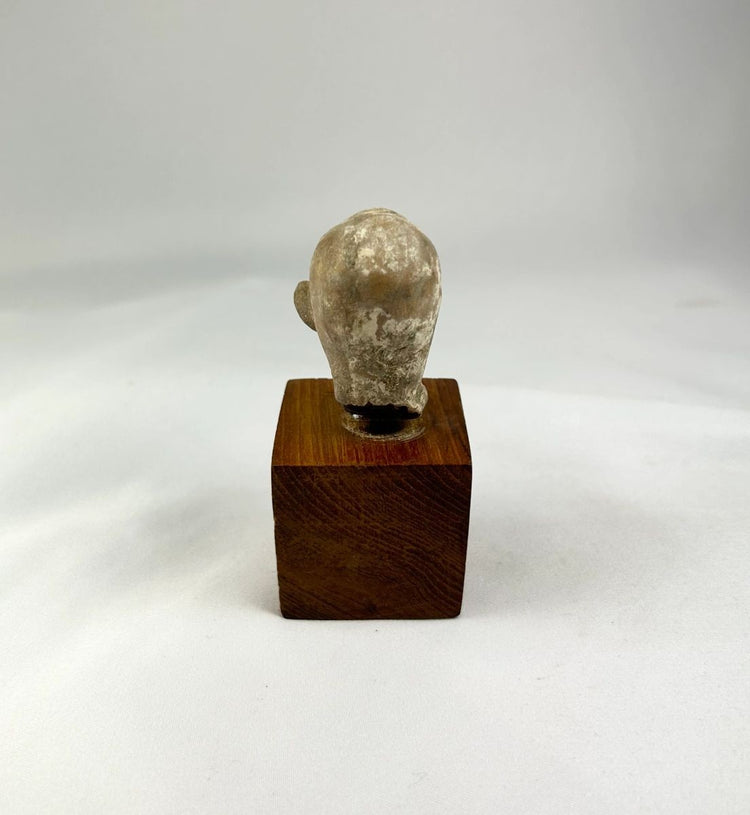Greco Roman Pottery Head of a Boy | 2nd Century BC | 1st Century AD
Description
More
Less
Historical Context & Origin
Region: Eastern Mediterranean (Hellenistic or Roman world)
Material: Terracotta
Period: 1st Century BCE – 2nd Century CE
Description
This exquisite terracotta head fragment, dating from approximately the 1st century BCE to the 2nd century CE, reflects the refined artistry of the Hellenistic and early Roman periods. Measuring in a fragmentary yet expressive form, it captures the stylistic transition of the era, where idealized classical proportions merged with naturalistic details. The youthful face, with delicate features and a subtle smile, suggests the depiction of a young male—possibly a deity, mythological figure, or idealized youth—exemplifying the cultural emphasis on innocence, beauty, and symbolic ideals. Mounted on a modern wooden base, the fragment retains both elegance and gravitas as a collectible display piece.
Features
- Youthful face with delicate features and a serene expression
- Subtle smile reflecting naturalism and individuality
- Stylistic transition blending Hellenistic idealization with Roman realism
- Natural surface patina consistent with age
- Mounted on a modern wooden stand for display
Cultural Significance
The Hellenistic period marked a shift toward lifelike representation, individuality, and expressive detail in art. Youthful figures such as Eros or idealized children were frequently depicted in terracotta, appearing in domestic shrines, temples, and funerary contexts. By the early Roman era, these traditions merged with Roman tastes, emphasizing both symbolic and decorative functions. Such fragments provide valuable insight into how ancient societies conceived of youth, divinity, and the human form, while also illustrating the broader cross-cultural fusion of Mediterranean art.
Condition
Well-preserved fragment with patina and surface wear consistent with antiquity. Stable form, securely mounted for modern display.
Dimensions (approximate)
Height: 1.7 in (head)
Width: 1.2 in (head)
Age
Circa 1st Century BCE – 2nd Century CE
Learn More
Discover the Fascinating World of Greco-Roman Pottery and the mythology that inspired its designs.
Browse our Remarkable Collection of Greek and Roman Artifacts and Antiquities
Description
Historical Context & Origin
Region: Eastern Mediterranean (Hellenistic or Roman world)
Material: Terracotta
Period: 1st Century BCE – 2nd Century CE
Description
This exquisite terracotta head fragment, dating from approximately the 1st century BCE to the 2nd century CE, reflects the refined artistry of the Hellenistic and early Roman periods. Measuring in a fragmentary yet expressive form, it captures the stylistic transition of the era, where idealized classical proportions merged with naturalistic details. The youthful face, with delicate features and a subtle smile, suggests the depiction of a young male—possibly a deity, mythological figure, or idealized youth—exemplifying the cultural emphasis on innocence, beauty, and symbolic ideals. Mounted on a modern wooden base, the fragment retains both elegance and gravitas as a collectible display piece.
Features
- Youthful face with delicate features and a serene expression
- Subtle smile reflecting naturalism and individuality
- Stylistic transition blending Hellenistic idealization with Roman realism
- Natural surface patina consistent with age
- Mounted on a modern wooden stand for display
Cultural Significance
The Hellenistic period marked a shift toward lifelike representation, individuality, and expressive detail in art. Youthful figures such as Eros or idealized children were frequently depicted in terracotta, appearing in domestic shrines, temples, and funerary contexts. By the early Roman era, these traditions merged with Roman tastes, emphasizing both symbolic and decorative functions. Such fragments provide valuable insight into how ancient societies conceived of youth, divinity, and the human form, while also illustrating the broader cross-cultural fusion of Mediterranean art.
Condition
Well-preserved fragment with patina and surface wear consistent with antiquity. Stable form, securely mounted for modern display.
Dimensions (approximate)
Height: 1.7 in (head)
Width: 1.2 in (head)
Age
Circa 1st Century BCE – 2nd Century CE
Learn More
Discover the Fascinating World of Greco-Roman Pottery and the mythology that inspired its designs.
Browse our Remarkable Collection of Greek and Roman Artifacts and Antiquities
You May Also Like


















